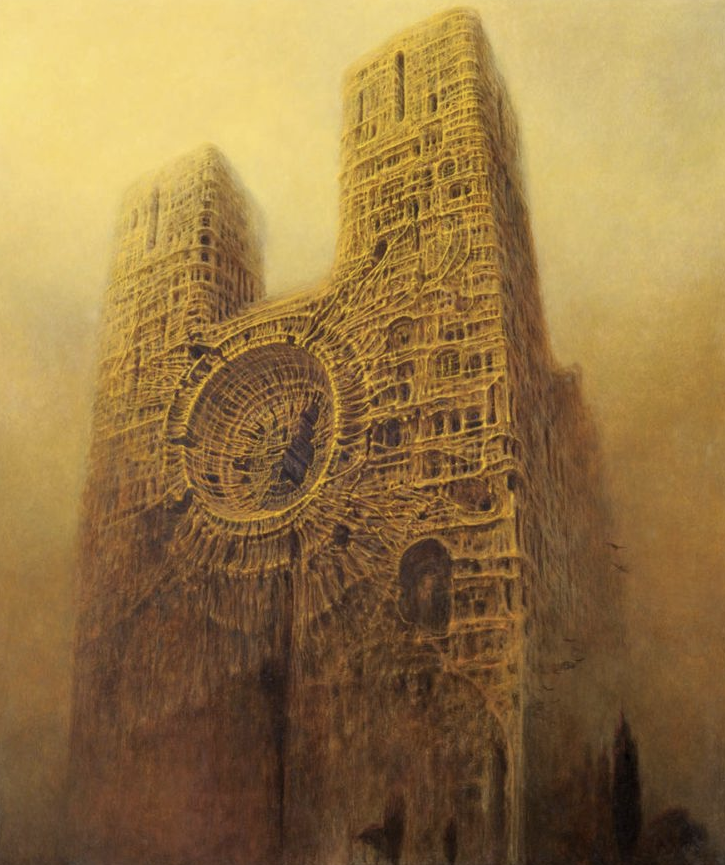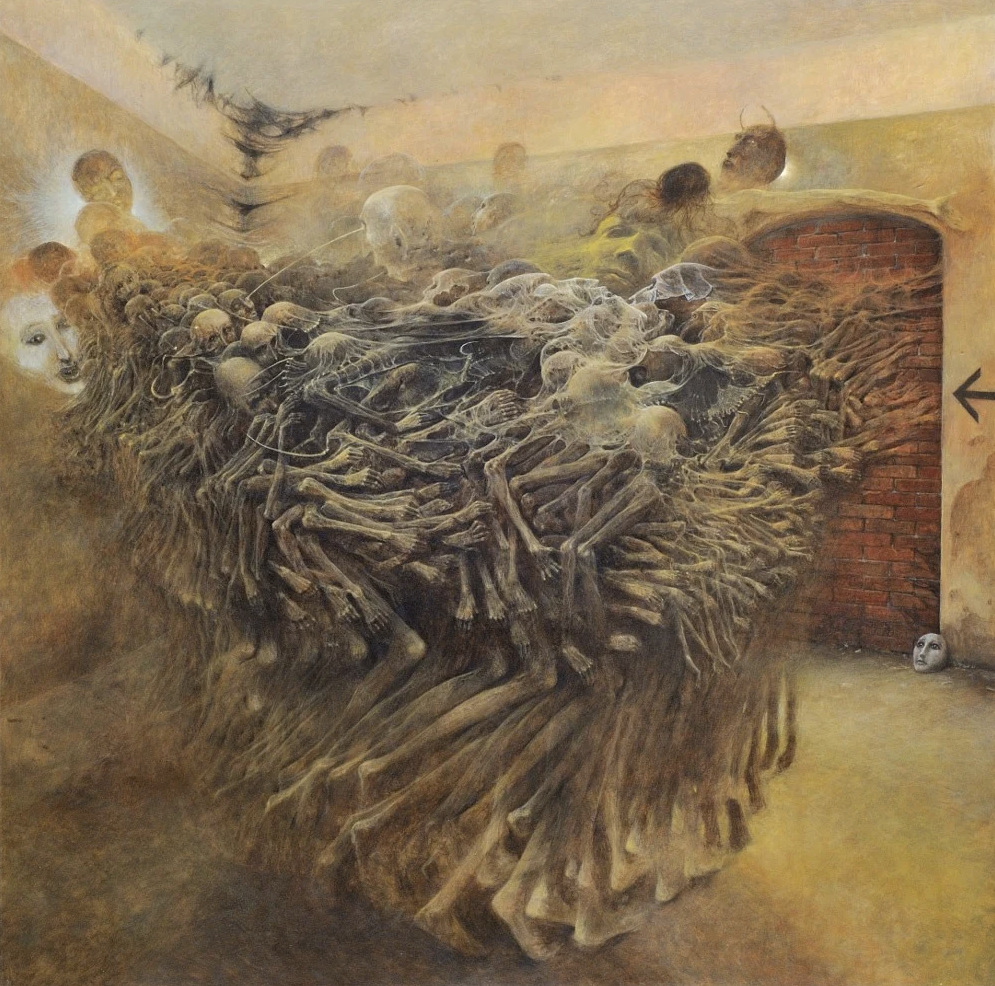Photographing Hell
Photograph by Zdzisław Beksiński, untitled, 1950
You probably know of Zdzisław Beksiński. He was a Polish artist to whom life dealt massive hammer blows of suffering. His most popular works are those depicting what could tersely be described as hellscapes. He was a thoughtful and perceptive man who, under Nazi and then Soviet rule, knew a thing or two about pain, deprivation, punishment, deterioration, and forces of senseless power.
The Demiurge
In his paintings, he did indeed explore in the most lurid and explicit manner the idea of a dead place. Somewhere that was once host to heartbeats and voices but is now in a state beyond rot, persisting past even the most apocalyptic cockroach. To reach these levels of deterioration, try to imagine that the world has outlived the demiurge. The universe's caretaker has gone to pasture and now the very air and soil are wrinkling, atrophying, filling the sky with dust - yet a few things live in these last moments, grafting bones and woodlike flesh into their forms so they can shamble further into the endlessness.
Beksiński would tell you none of that means anything - that he was not guided by intellectual narratives but by a spinal tingle that led him vaguely towards visceral and shocking pictures, each with their own interpretations. But I think he may have underestimated to what degree he was a slave to his political and environmental influences. The unerring thematic consistency of his work shows that he was telling us something about his suffering.
A toddler is thematically obsessed with her family - she can’t stop drawing them because it’s what she knows and loves the most. In a similar kind of way, Beksiński could not stop exploring hell in his art. To my mind, when he paints the grand Notre Dame withering into something spindly and perforated, or when he shows us a soldier in a helmet with splitting, ribbing, grey stone for flesh, he is showing us the loss of his national and cultural identity.
Painting by Beksiński, AA83, 1984
The people and places in his work are alone, untended, disdained, and left to rot. They are in such an advanced state of disrepair that there is no hope that they will return to their former glory, yet they still stand. We can still see them, just as in Beksiński’s homeland, the Poland of his youth still materially existed, but it would never return to what it was in spirit.
Unlike the architecture, the people in his work are full of spirit. They are often rendered horrifically with emaciated forms and skin made of stone, or calcified ash, or something. They are subject to the same forces of decay as their environment, yet they are often in motion, or looking, or clutching, doing something with intent. In so desolate a world, any action towards any goal is a rebellion against fate. It demonstrates the irrepressibility of the human spirit.
Painting by Beksiński, untitled, 1980
When Beksiński shows us multiple wretched bodies in a single scene, they are usually in some kind of collaboration. Sometimes they phase together to form a single entity, and sometimes they’re rendered giving one another palliative love.
So I think that Beksiński consciously or subconsciously glorifies the human spirit - or perhaps the Polish spirit - and mournfully reflects on the loss of Polish identity.
Shattered
Beksiński was not just a painter, he made brief excursions into sculpture, creative writing, photography, and even digital art. All of it bears analysis, but his most distinct parenthetical was photography.
He is widely regarded as one of the most inventive photographers of the 1950s. He seemed motivated to break through the mundanity of his environment and isolate the curious and evocative. He was drawn to mirrors, shadows, repeating textures, microstructures, and unrecognizable things positioned starkly amongst the ordinary.
Often, Beksiński would carefully arrange a composition. Nothing - his women models included - made it through to development in one piece. He liked to take his subjects and shatter them with a mirror, bisect them with a wall, or mutilate them with a penknife on celluloid.
His wife, Zofia, was a frequent model in his early photography. It’s clear from their creations together that her husband was enamored, even worshipful of her form. She appeared naked here and there and indulged his experimentations, sometimes being wrapped tight in rope, taking a pin-up-esque shot, and posing for almost anatomical views of her spine.
Photograph by Zdzisław Beksiński, untitled, 1950
Back out in the world, Beksiński demonstrated his keen eye for the curious and the unrecognizable. Once he found it, he would either isolate it within the frame or pull back to reveal its mundane environment. He drew your eye to the properties that made it curious, be it the repeating shapes, the indeterminable materials, or something else, leaving you wondering what on Earth it was you were looking at.
The microworld was a treasure trove of curiosities for Beksiński. Down there, nothing was recognizable. Up here - this is the world of people, narratives, and tools. Down there - that is the world of component pieces, insect items that were never designed to be seen or used directly. Beksiński presented his images of the microworld without description.
Photography of this type is my favourite form of photography - it shows us that beauty and wonder are there waiting for anyone who just looks closely enough at what’s around them.




